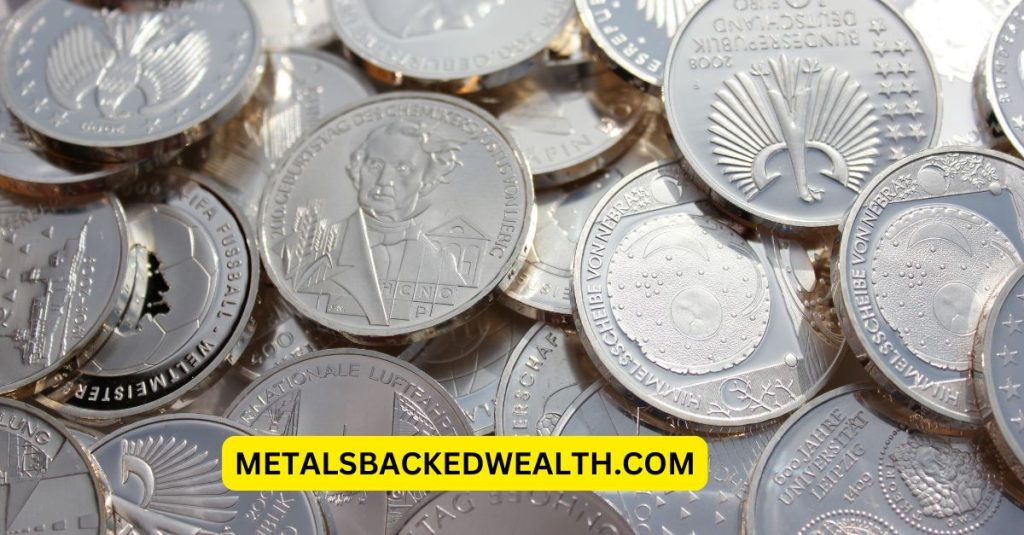Have you ever wondered how you can diversify your retirement portfolio beyond just stocks and bonds? A Silver IRA might be the answer. Investing in physical silver through a retirement account can be a smart way to protect your savings from inflation while adding a tangible asset to your portfolio.
But before you start stacking silver bars, it’s important to understand What Is a Silver IRA how it works, what’s allowed, and the potential pitfalls to avoid. In this guide, we’ll break it all down — no confusing jargon, just clear information to help you decide if a Silver IRA is right for you.

Silver Allowed in an IRA
Not all silver is eligible for IRA investment — the IRS has strict guidelines to ensure investors are purchasing high-quality assets.
Approved Silver for IRAs Must:
✅ Be .999 fine silver or higher
✅ Come from a trusted mint or refinery
✅ Be in the form of approved coins or bars
Examples of IRS-Approved Silver for IRAs:
- American Silver Eagle Coins
- Canadian Silver Maple Leaf Coins
- Austrian Silver Philharmonic Coins
- Silver bars from reputable manufacturers like PAMP Suisse, Sunshine Minting, or Valcambi

Silver IRA Rollovers: How to Transfer Funds from an Existing Account
If you already have a retirement account like a 401(k), 403(b), or Traditional IRA, you can move those funds into a Silver IRA through a rollover or transfer.
Silver IRA Rollover Process
- Choose a Self-Directed IRA Custodian
- Since Silver IRAs require a specialized custodian, find one experienced in handling precious metals IRAs.
- Open a New Silver IRA Account
- Your custodian will guide you through the paperwork.
- Initiate the Rollover
- Request a direct rollover from your current retirement plan provider. Funds will be sent directly to your new Silver IRA account.
- Purchase IRS-Approved Silver
- Once funds are in your new account, you can buy approved silver coins or bars.
- Store the Silver in an Approved Depository
- IRS rules require your silver to be stored securely — no keeping it at home.
Rollover vs. Transfer: What’s the Difference?
- Rollover: Funds are paid directly to you, and you have 60 days to deposit them into your Silver IRA to avoid penalties.
- Transfer: Funds move directly from one custodian to another — this method avoids tax risks and is often simpler.
💡 Pro Tip: A transfer is often the safer choice because it minimizes the risk of unexpected taxes or penalties.
Silver IRA Storage Options
One important rule: You can’t store your Silver IRA investments at home. The IRS requires precious metals in IRAs to be stored in an approved depository.
Types of Storage Options:
- Segregated Storage: Your silver is stored separately in its own designated space — ideal for added security.
- Non-Segregated Storage: Your silver is stored alongside other investors’ silver but still carefully accounted for.
Sure! Here’s a clear comparison of Segregated vs. Non-Segregated Storage in table format:
| Feature | Segregated Storage | Non-Segregated Storage |
|---|---|---|
| Description | Your silver is stored separately in a designated area with your name/account number. | Your silver is stored with other investors’ metals in a shared vault. |
| Exclusive Ownership | ✅ Yes — You receive the exact coins and bars you purchased. | ❌ No — You receive silver of equal value and purity, but not the exact items. |
| Security Level | 🔒 Higher — No risk of mix-ups or exchanges. | 🔒 Moderate — Still secure, but items are pooled with others. |
| Cost | 💰 More expensive due to individual handling and storage space. | 💰 More affordable since metals are stored in bulk. |
| Audit Process | ✔️ Easier to track since your metals are stored separately. | ❗ Tracking is more complex as metals are mixed with others. |
| Best For | Investors seeking maximum security and specific item retention. | Investors focused on lower costs and comfortable with pooled storage. |
Trusted Depository Facilities:
- Delaware Depository (widely recognized and IRS-approved)
- Brinks Global Services (known for high security)
- IDS of Texas (popular for precious metals storage)
These facilities specialize in safeguarding precious metals, ensuring your silver is protected under strict security protocols.
IRS Requirements & Rules for Silver IRAs
Before diving in, understanding the IRS rules can save you from costly mistakes.
Key IRS Guidelines:
- Custodian Requirement: A self-directed IRA custodian must manage the account to ensure compliance.
- Contribution Limits: As of 2025, the IRA contribution limit is $7,000 (or $8,000 if you’re 50 or older).
- Required Minimum Distributions (RMDs): Once you reach age 73, you’ll need to start taking distributions to avoid penalties.
- No Home Storage Rule: Despite some marketing claims, keeping your silver at home disqualifies your IRA and may result in tax penalties.
- Eligible Retirement Accounts: You can fund a Silver IRA with rollovers from 401(k)s, 403(b)s, 457 plans, and most traditional IRAs.
Skipping these rules can lead to penalties, so working with a knowledgeable custodian is essential.
Silver IRA Scams & Pitfalls to Avoid
While investing in silver can be rewarding, there are some shady players out there. Here’s how to protect yourself:
Red Flags to Watch For:
🚩 Overpriced Coins: Some dealers push collectible or “proof” coins at inflated prices. Stick to bullion coins for investment value.
🚩 Unverified Storage Claims: Be wary of companies claiming you can keep your silver at home — this is not IRS-compliant.
🚩 Pressure Tactics: Avoid aggressive salespeople urging you to buy quickly. A trustworthy dealer will give you time to make informed decisions.
How to Stay Safe:
✅ Research the dealer’s reputation
✅ Verify the custodian’s credentials
✅ Ask for detailed information about storage and fees
IRA-Approved Silver Coins
To simplify your investment choices, here are some popular silver coins that meet IRS standards:
- American Silver Eagle (highly liquid and widely recognized)
- Canadian Silver Maple Leaf (known for its purity and security features)
- Austrian Silver Philharmonic (popular for European investors)
These coins are valued for their silver content and are often easier to sell when you’re ready to cash out.
IRA-Approved Silver Bars
Silver bars can be an excellent way to buy silver in larger quantities. To qualify for a Silver IRA, bars must be .999 fine silver and come from reputable refiners such as:
- PAMP Suisse
- Sunshine Minting
- Royal Canadian Mint
Silver bars often have lower premiums compared to coins, making them a cost-effective choice for larger investments.
Silver Bullion Coins NOT Allowed in an IRA
Not all silver coins qualify for an IRA, even if they seem valuable. Common disqualified coins include:
❌ Pre-1965 U.S. Silver Coins (like dimes, quarters, and half dollars)
❌ Silver Krugerrands (despite being a popular coin, they don’t meet IRS purity standards)
❌ Silver Rounds (though similar to coins, they aren’t considered legal tender and don’t qualify)
When in doubt, consult your IRA custodian to confirm eligibility.
Pros and Cons of a Silver IRA
Pros:
✅ Inflation Protection: Silver often retains value when paper assets struggle.
✅ Diversification: Helps balance risk in your portfolio.
✅ Tangible Asset: Silver has intrinsic value that won’t vanish overnight.
Cons:
❌ Storage Fees: Custodian and storage costs can add up over time.
❌ Market Volatility: Silver prices can fluctuate significantly.
❌ Complex Setup: A Silver IRA requires more paperwork and oversight than traditional IRAs.
Bottom Line
Investing in a Silver IRA can be a powerful way to protect your retirement savings while adding a tangible asset to your portfolio. By understanding the IRS rules, choosing reputable dealers, and securely storing your silver, you can avoid common pitfalls and build a more resilient retirement plan.
If you’re considering a Silver IRA, take your time, do your research, and consult with a trusted financial advisor. After all, investing in silver isn’t just about stacking coins — it’s about securing your future.
